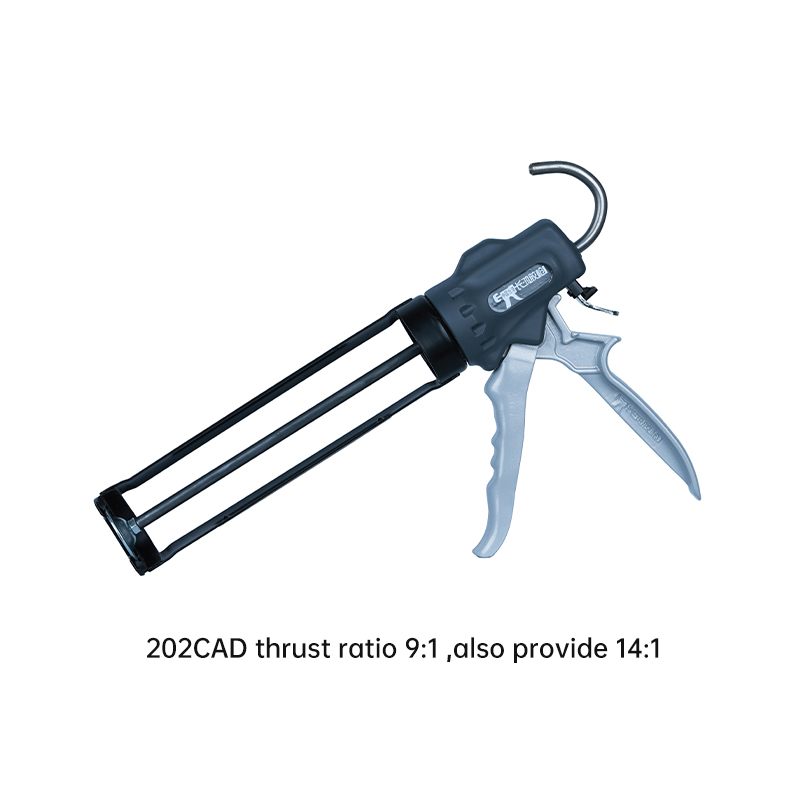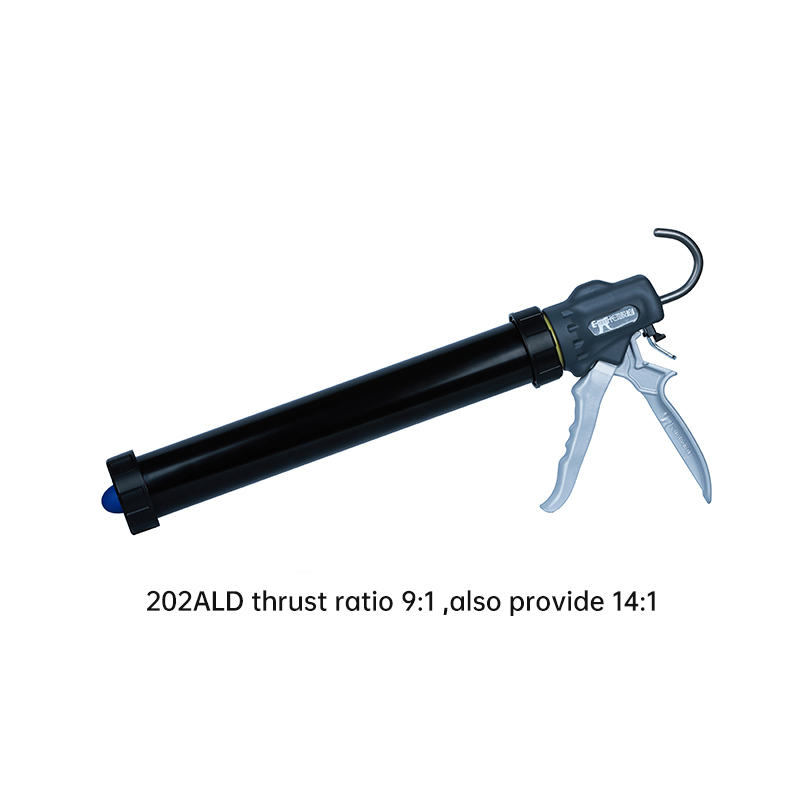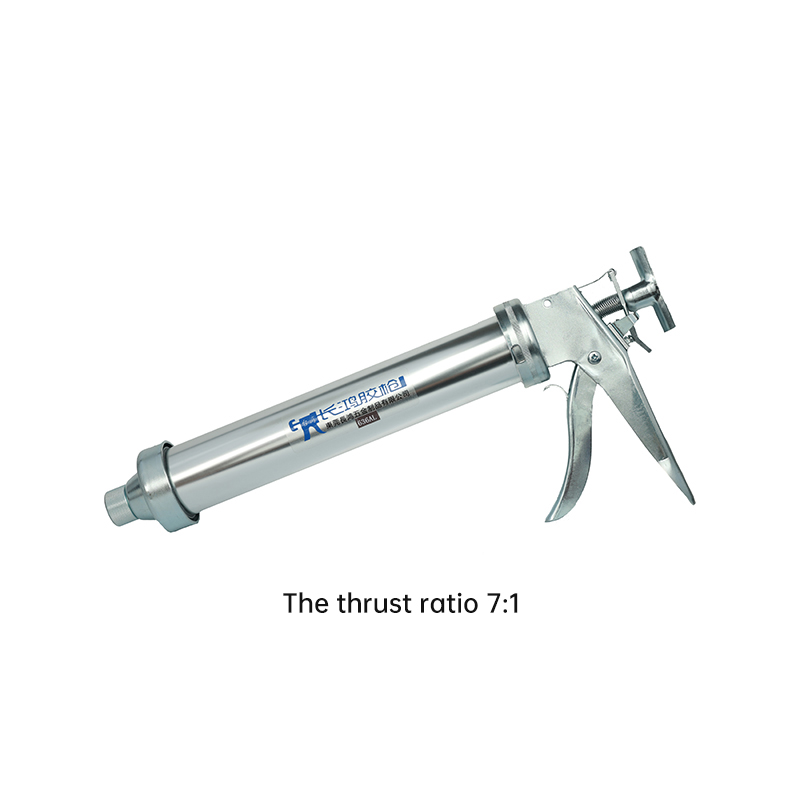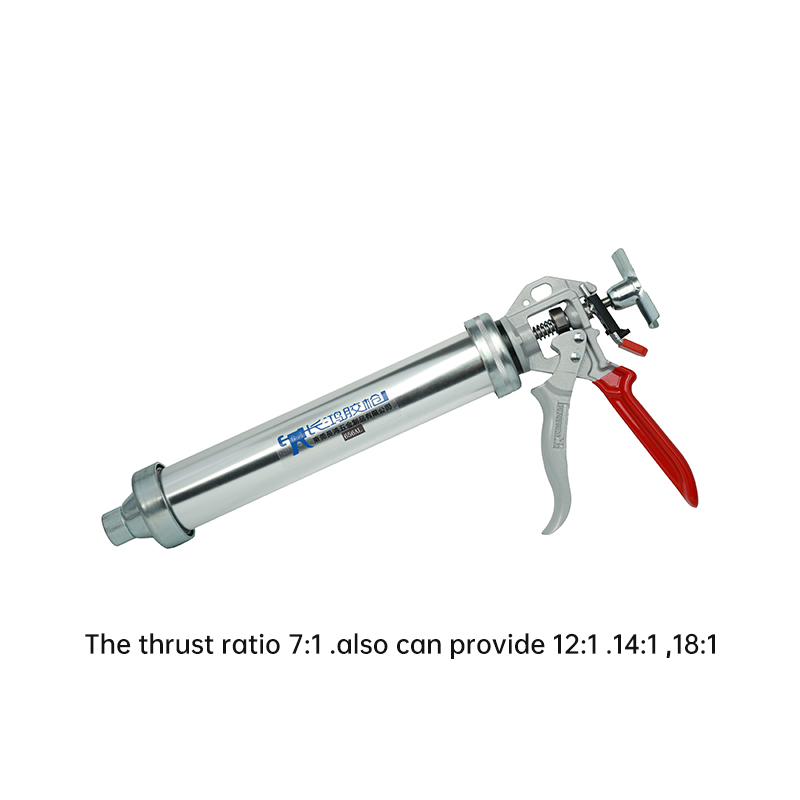Can a caulking gun effectively prevent material breakage, spattering, and air bubbles from uneven pressure?
Release Time : 2025-10-21
A caulking gun (also known as a glue gun) is an indispensable tool for a wide range of applications requiring precise extrusion, from home baking to filling homemade sausages with meat fillings, to wall glueing and pipe sealing. However, using conventional methods to squeeze a hose or inexpensive tools often leads to frustrating problems: inconsistent material output, sudden interruptions, wasteful material splashing, and even the introduction of air bubbles into the gel or food, affecting both aesthetics and performance. The root cause of these problems is often uneven pressure control. A well-designed manual caulking gun, through its precise mechanical structure, effectively avoids these common drawbacks, achieving smooth, controllable, and high-quality extrusion.
The key to a caulking gun's ability to address uneven pressure is its ability to convert manual effort into a stable, linear force. Unlike manually squeezing a hose, a caulking gun uses a lever to amplify the operator's force, using a push rod to evenly push the piston or the bottom of the material in a straight line. This propulsion method eliminates finger pressure on the side of the hose, preventing the "blocked, flow-in" phenomenon caused by shifting pressure points. Under constant and even pressure, the material flows smoothly along the barrel's axis and is extruded continuously from the outlet, eliminating intermittent or sudden gushes.
For highly viscous materials such as heavy cream, minced meat, or structural adhesives, manual extrusion can easily result in interruptions due to insufficient force or splashing caused by sudden application of force. The caulking gun's effort-saving design allows the operator to generate sufficient propulsion force with minimal grip force, maintaining a steady rhythm. Instead of applying a sudden pressure, the user achieves precise flow control by slowly and continuously depressing the handle. This predictable delivery method ensures smooth, seamless application of everything from fine piping lines to large sections of sealant filling, eliminating splashing and waste caused by sudden pressure increases.
The caulking gun also effectively reduces the risk of air bubbles entering the pipe. Repeated manual squeezing of a hose can easily create vortices or cavities within the material, especially during changes in direction or pauses, which can trap air. In contrast, a caulking gun uses a push rod that pushes the material forward in a laminar flow, creating a more organized flow path and reducing turbulence and air entrapment. Especially when the sausage tube or hose is properly filled and free of initial bubbles, the caulking gun's steady thrust maintains material density to the greatest extent possible, ensuring that the extruded rubber strip or sauce is full and uniform, free of holes or air gaps.
The tool's inherent structure also provides this guarantee. The stable collet clamp prevents the sausage tube or hose from shaking or shifting during operation, and the push rod always stays directly in the center of the barrel, preventing tilting that could cause unilateral force, localized blockage, or leaks. Many caulking guns also feature an adjustable stopper to adjust the push rod's starting position based on the remaining material in the barrel, ensuring precise and effective advancement at each stage.
In practice, this stable pressure control has significantly improved quality. Baking enthusiasts can easily create complex cake decorations with smooth, consistent lines. Homemade sausages can be filled with fillings for a more satisfying texture. During caulking operations, the sealant is applied continuously and smoothly, creating a tight, waterproof, and leak-proof finish.
Ultimately, the value of the caulking gun lies not only in its "labor savings" but also in its "precision." It replaces the uncertainty of manual labor with mechanical stability, transforming the uncontrollable squeezing action into a repeatable, delicate operation. It eschews brute force in favor of rhythm and control, safeguarding the integrity and beauty of the finished product with each steady push. Whether creating sweet creations in the kitchen or meticulous construction on the construction site, it silently proves that true efficiency stems from meticulous attention to detail.
The key to a caulking gun's ability to address uneven pressure is its ability to convert manual effort into a stable, linear force. Unlike manually squeezing a hose, a caulking gun uses a lever to amplify the operator's force, using a push rod to evenly push the piston or the bottom of the material in a straight line. This propulsion method eliminates finger pressure on the side of the hose, preventing the "blocked, flow-in" phenomenon caused by shifting pressure points. Under constant and even pressure, the material flows smoothly along the barrel's axis and is extruded continuously from the outlet, eliminating intermittent or sudden gushes.
For highly viscous materials such as heavy cream, minced meat, or structural adhesives, manual extrusion can easily result in interruptions due to insufficient force or splashing caused by sudden application of force. The caulking gun's effort-saving design allows the operator to generate sufficient propulsion force with minimal grip force, maintaining a steady rhythm. Instead of applying a sudden pressure, the user achieves precise flow control by slowly and continuously depressing the handle. This predictable delivery method ensures smooth, seamless application of everything from fine piping lines to large sections of sealant filling, eliminating splashing and waste caused by sudden pressure increases.
The caulking gun also effectively reduces the risk of air bubbles entering the pipe. Repeated manual squeezing of a hose can easily create vortices or cavities within the material, especially during changes in direction or pauses, which can trap air. In contrast, a caulking gun uses a push rod that pushes the material forward in a laminar flow, creating a more organized flow path and reducing turbulence and air entrapment. Especially when the sausage tube or hose is properly filled and free of initial bubbles, the caulking gun's steady thrust maintains material density to the greatest extent possible, ensuring that the extruded rubber strip or sauce is full and uniform, free of holes or air gaps.
The tool's inherent structure also provides this guarantee. The stable collet clamp prevents the sausage tube or hose from shaking or shifting during operation, and the push rod always stays directly in the center of the barrel, preventing tilting that could cause unilateral force, localized blockage, or leaks. Many caulking guns also feature an adjustable stopper to adjust the push rod's starting position based on the remaining material in the barrel, ensuring precise and effective advancement at each stage.
In practice, this stable pressure control has significantly improved quality. Baking enthusiasts can easily create complex cake decorations with smooth, consistent lines. Homemade sausages can be filled with fillings for a more satisfying texture. During caulking operations, the sealant is applied continuously and smoothly, creating a tight, waterproof, and leak-proof finish.
Ultimately, the value of the caulking gun lies not only in its "labor savings" but also in its "precision." It replaces the uncertainty of manual labor with mechanical stability, transforming the uncontrollable squeezing action into a repeatable, delicate operation. It eschews brute force in favor of rhythm and control, safeguarding the integrity and beauty of the finished product with each steady push. Whether creating sweet creations in the kitchen or meticulous construction on the construction site, it silently proves that true efficiency stems from meticulous attention to detail.







